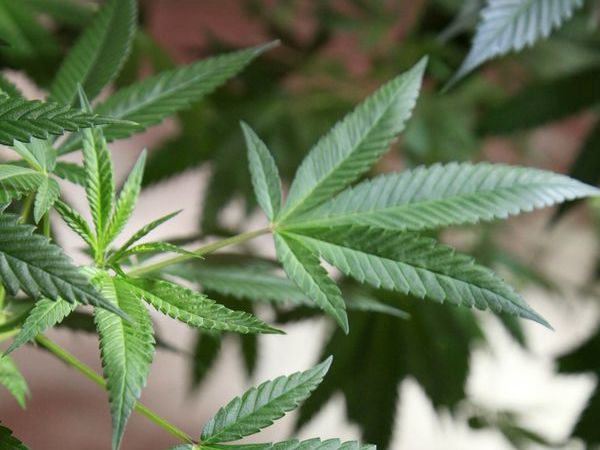Financial institutions are trying to sort through various regulatory challenges when serving the marijuana industry, even as some parts are still considered illegal
Complicated is an understatement when it comes to deciphering the current regulatory and enforcement ecosystems around marijuana, hemp and cannabidiol (CBD). As you might have guessed, the laws aren’t the same, and the differences between them are complicated.
Many cannabis-related businesses struggle to find bankers because marijuana is still considered wholly illegal as a Schedule 1 drug by the federal government. More than 30 U.S. states have legalized marijuana for medical use, and there are currently 11 states that allow the usage and sale of recreational marijuana, including most recently Illinois. The 2018 Farm Bill legalized hemp, subject to new rules and regulations that are still being written and not yet implemented at the federal or state level. And CBD remains in a dubious legal gray area.
Hence, the legality of cannabis and cannabis-related products remains opaque at best. Yet, that hasn’t stopped sales from booming. Researchers estimate the U.S. market for marijuana could reach $25-30 billion by 2023 while CBD alone could surge anywhere from $16 billion to $24 billion by 2023.
Why this Matters for Financial Institutions
Financial institutions are required to follow anti-money laundering regulations set forth by Financial Crimes Enforcement Network (FinCEN). FinCEN has issued guidance that those that work with marijuana-related businesses are required to perform enhanced due diligence, a level of risk analysis, and on-going monitoring for that customer type, all while marijuana remains illegal. Moreover, institutions must file suspicious activity reports (SARs) and currency transaction reports as events warrant. While FinCEN hasn’t provided any guidance on hemp or CBD yet, given the close family proximity to marijuana, most financial institutions are taking a similarly conservative, if not completely “hands off” approach until further guidance, acceptance, or industry maturity occurs.

Interestingly, for financial institutions seeking clients in marijuana businesses, the guidance and requirements are arguably clearer for marijuana (meaning, an enhanced screening and reporting requirement) than for CBD or hemp, which, while legal or quasi-legal, have less history behind them. But what about CBD oil? What about the bodega on the corner selling CBD products? Are they also required to file a SAR with FinCEN?
To help make some sense of this conundrum, I spoke with Steven Kemmerling, CEO of CRB Monitor, a corporate intelligence platform that helps financial institutions more effectively understand, identify, and manage potential risks and opportunities related to the emerging “legalized” cannabis industry, including marijuana, hemp, and CBD.
Cannabis Language Decoder
But first… a language primer. Aren’t cannabis and marijuana the same thing? How about cannabis and hemp?
Well, yes. Marijuana derives from cannabis. Hemp derives from cannabis. Kemmerling says the main difference between hemp and marijuana is the Tetrahydrocannabinol (THC) content — the psychoactive ingredient which gives the user the “high” feeling.
“Cannabis is the plant; Cannabis sativaL.,” Kemmerling says. “Marijuana and hemp are different varieties of the same Cannabis sativa L. plant. Like with a tomato, there are different variations.” He explains that “marijuana” is the legal term for cannabis with THC measured over 0.3%; and “hemp” is the legal term for cannabis with less than or equal to 0.3% THC.
And what is CBD?
CBD is a compound that comes from cannabis — either “hemp” or “marijuana”, he says. And this is where the legality gets murky. “The 2018 Farm Bill also removed hemp-derived products from Schedule I status under the Controlled Substances Act (CSA), but did not exactly legalize CBD. To be fully legal, CBD has to be derived from hemp grown legally under the Farm Bill and produced and sold consistent with other federal and state-specific laws and regulations, including U.S. Food & Drug Administration (FDA) rules.”
FDA Principal Associate Commissioner for Policy Lowell Schiller recently said that the FDA retains regulatory authority over hemp-derived products and it remains illegal to introduce CBD in the food supply or as dietary supplements unless the agency develops alternative rules. Because CBD exists as an FDA-approved epilepsy drug, Epidiolex, creating a regulatory framework is more complicated.
“If a CBD product can be proven to contain less than 0.3% THC, comes from a legal hemp grower, is sold in a state without hemp/CBD restrictions (For example, South Dakota says both hemp and CBD are still illegal), and is not used in a way that conflicts with the FDA, then it might be legal,” explains Kemmerling, pointing to a recent analysis that indicates upwards of 90% of CBD businesses are operating in FDA “Gray Area”.
However, if CBD is extracted from marijuana, it is arguably illegal because you can’t produce a “legal” product derived from an illegal source, he adds.
Gina Jurva and Steve Kemmerling will be part of an upcoming panel examining banking the marijuana industry at ACAMS 18th Annual AML & Financial Crime Conference, in Las Vegas on Sept. 23.







